The Benefits Of Creating Websites Applications On Joomla
Multilingual
Make your site more accessible to reach a larger audience with more than 64 languages
Enthusiastic Community
Supported by an enthusiastic and mighty community to help your Joomla project
Fast Upgrade
Joomla has ‘one click upgrade’. The built-in updater has an automated checker which notifies updates.
Integrated help system
Joomla is easy for every level of user to operate with an in-app contexual help system.
Move online in seconds
Bring your website online with simple registration process within seconds of time.
Mobile-friendly
All the available templates are responsive and your site gets displayed on any mobile devices.
Powerful Extensions
You may extend your website to any extent and broaden its functionality anytime.
Smart search
Advanced search options, smart indexing, auto suggest searches enables quick data search.
Best practices and tips for securing Joomla websites against vulnerabilities.
Securing your Joomla website is crucial to protect it from potential threats and ensure the safety of your data. Here are some best practices to help enhance the security of your Joomla website:
.
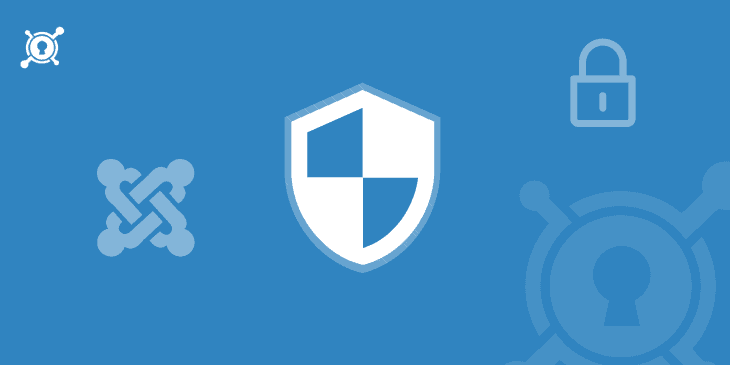
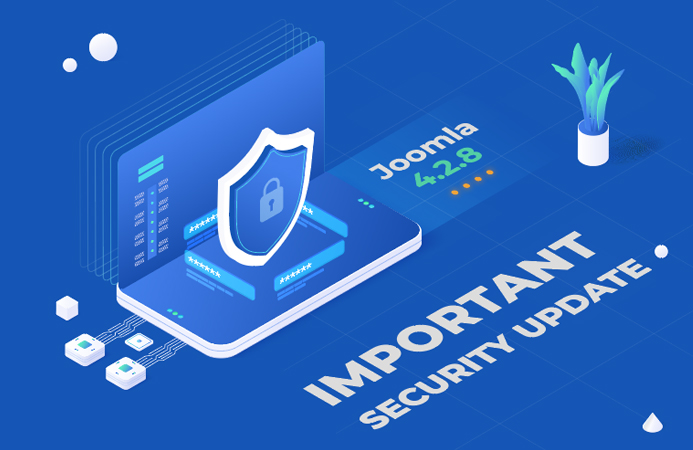
Use the Latest Version of Joomla & Extensions
Keep Joomla Up-to-Date: Regularly update your Joomla installation, including the core software, themes, and extensions, to benefit from security patches and bug fixes.
Use Strong Password for Secure Administrator Login
Use Strong Admin Credentials: Choose a unique and strong username and password for your Joomla administrator account. Avoid using common or easily guessable credentials.
Delete Unwanted & Unsecured Extensions
Joomla is open source CMS and as an administrator, you may install many modules or extensions to try out new functionality in your site. It’s good to improve the functionality, but the bad thing is when you install a low-quality extension that will create flaws in your site. So, delete the extensions, which you are not going to use.
Take Backup Regularly
Backup is the life-saving process._ In case of, when things go wrong, backup is probably one of the quickest and best way to restore your online business operations. You should host your website in a reliable hosting company like SiteGround, who provides a good backup plan. Along with hosting backup, you may use an extension like Akeeba backup.
Monitor your Joomla Site
If your website goes down or defaced then how do you know? Use the StatusCake tool which monitors your website and notifies you through the email, slack or SMS when if website is not reachable. This is a free tool and you can take necessary actions immediately if needed.
Use a Powerful Security Extensions
Use a powerful extension that can fight against spam, known vulnerabilities, and known attacks like brute force attack, SQL Injections. There are many and security extensions available for Joomla in the Joomla extensions directory. Amongst them, R Antispam, Incapsula, and Security Check are best and effective ones. You may use one from these.
Implement Two-Factor Authentication
Two-Factor Authentication is an extra security layer that requires not only a username and password from the user but also require something that only, and only, that user has on them.
It will be a piece of information only the user should know or have immediately to hand such as a physical token or a random generated OTP (One Time Password).
OTP is a six numeric digit code_ that _generated by cryptographic functions_ in a short interval. Even if the hacker will get your Joomla administrator username and password, they would still require the OTP to logged in the system. If you want to enable the Two-Factor Authentication, it _requires Joomla 3.2.0 or higher version.
The steps to enable Two-Factor Authentication:
Joomla CMS has a built-in plugin for Two Factor Authentication (2FA). Here is how to enable and configure the 2FA plugin for your Joomla backend:
- 1. Log in to your Joomla admin dashboard.
- 2. Go to the “Extensions” menu and click on “Plugins.”
- 3. Search for the “Two Factor Authentication” plugin and click on it to access its settings.

- 4. Enable the plugin by setting the “Status” toggle to “Enabled.”
- 5. Update the plugin configuration to enable 2FA for the backend only. This can be done in the “Basic Options” section.
- 6. Click “Save & Close” to save your changes.
- 7. Edit your user account in the “Users” section of the Joomla backend.
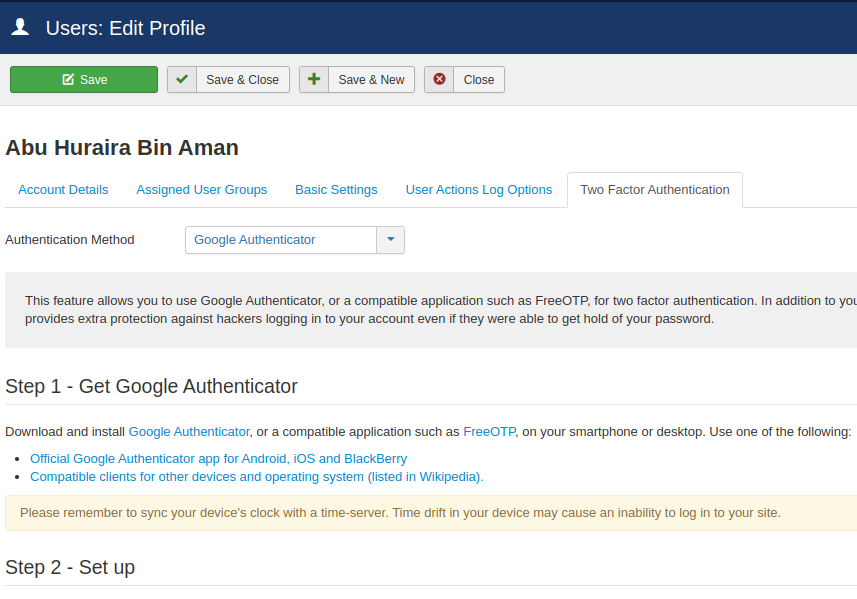
- 8. You will now have a new tab or options for Two Factor Authentication.
- 9. Enable 2FA for your user account. You may need to input a secret key or QR code provided by the 2FA method you set up.
- 10. After you save your user profile, it will give you a one-time emergency password for recovery purposes.
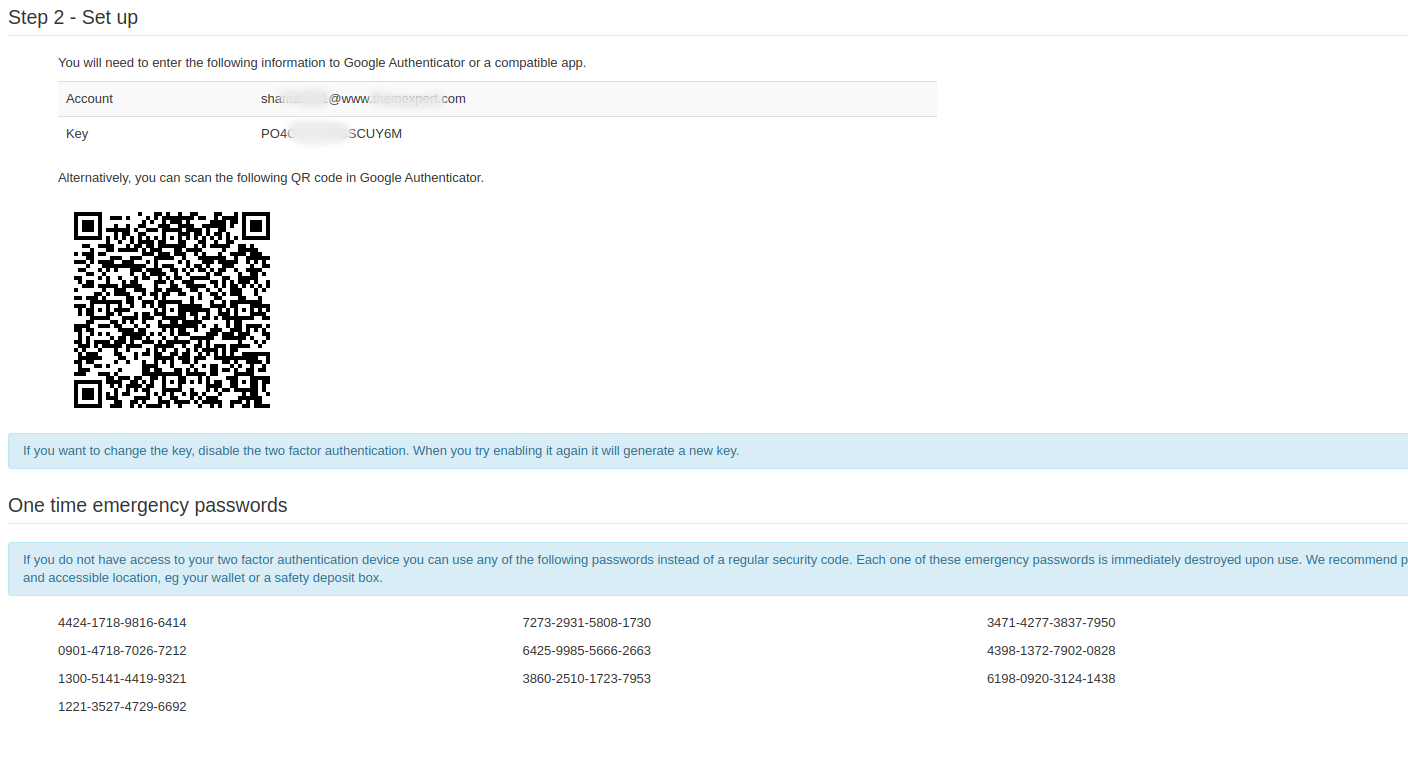
- 11. You can use the Google Authenticator app, Authy app, or Microsoft Authenticator app to set up 2FA.
- 12. Test your 2FA setup by logging out and attempting to log back in. Make sure to have your 2FA device ready.
- 13. Consider enabling 2FA for all users on your website for added security.

That’s it! You have successfully enabled and configured the Two Factor Authentication plugin for your Joomla CMS backend, providing an extra layer of security for your site.
Use SSL Certification
Use SSL certificate on your site and force Joomla into SSL mode.
Before enable SSL mode be sure that you _have configured SSL certificate_ for your site’s domain, or you will not be able to enable this feature.
When you use an SSL certificate on your website, it will encrypt the user’s username and password before sent to your server over the internet.
Read our blog post to know – How To Enable SSL On Joomla Website?
Remember that website security is an ongoing process. Stay informed about the latest security trends, keep your Joomla website updated, and proactively implement security measures to protect your website and its data from potential threats
Joomla Seo Services
Joomla SEO services are designed to help your Joomla website rank higher in search engine results, increasing visibility and traffic to your site. Our Joomla SEO services include keyword research, on-page optimization, link building, and analytics tracking to ensure your website is optimized for search engines and attracts the right audience.
We also offer ongoing SEO maintenance to ensure your website remains up-to-date with the latest SEO best practices and algorithm changes. Let us help you achieve higher search engine rankings and grow your online presence with our expert Joomla SEO services.


Providing SEO-friendly websites can greatly benefit your clients by improving their online visibility and driving more traffic to their website. It’s important to consider factors like website structure, content optimization, keyword research, and on-page optimization when building SEO-friendly websites. Additionally, incorporating off-page optimization tactics like link building and social media can also have a positive impact on SEO. Good luck with your SEO-friendly website development services!
How to install Joomla 4?
Welcome to our step-by-step guide on how to install Joomla 4. Whether you’re an experienced web developer or a beginner, we will provide you with all the necessary steps and tools to get your website up and running quickly and easily.
What is Joomla 4?
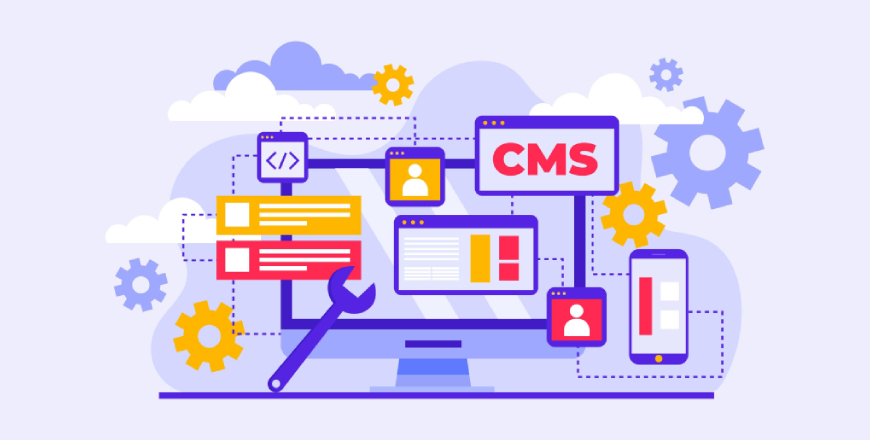
Joomla 4 is a powerful and open-source content management system (CMS) used to create and manage websites. It was released in 2021 as the latest version of Joomla and offers several new features, enhancements, and improvements over its predecessor, Joomla 3.
Joomla 4 provides an intuitive and user-friendly interface that makes it easy for users to manage their website content. With a wide range of customization options, including templates, themes, and plugins, Joomla 4 allows users to create websites that meet their specific needs and requirements.
Key features of Joomla 4 include a responsive design, enhanced security, improved accessibility, and integration with social media and third-party apps.
Joomla 4 is well-suited for a wide range of websites, from simple brochure-style sites to complex corporate websites, and is known for its scalability and performance.
Technical Requirements
| Software | Recommended | Minimum |
| PHP | 8.0 | 7.2.4 |
| Supported Databases | ||
| MySQL | 5.6 + | 5.6 |
| PostgreSQL | 11.0 + | 11.0 |
| Supported Web Servers | ||
| Apache | 2.4 + | 2.4 |
| Nginx | 1.18 + | 1.10 |
| Microsoft IIS | 10 + | 8 |
Download Joomla! 4
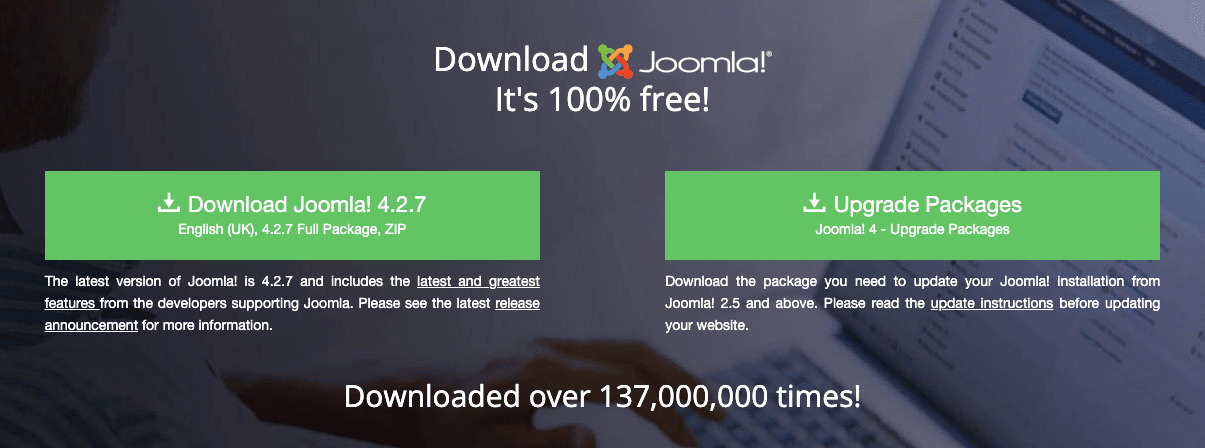
Go to the official Joomla website and click on the “Download” button. From the “Download Joomla!” page, select the latest version of Joomla 4 and click the “Download” button.
Install Joomla! 4 on the server manually
Here is a step-by-step guide to installing Joomla 4 on a server manually:
Upload Joomla! 4 to your server
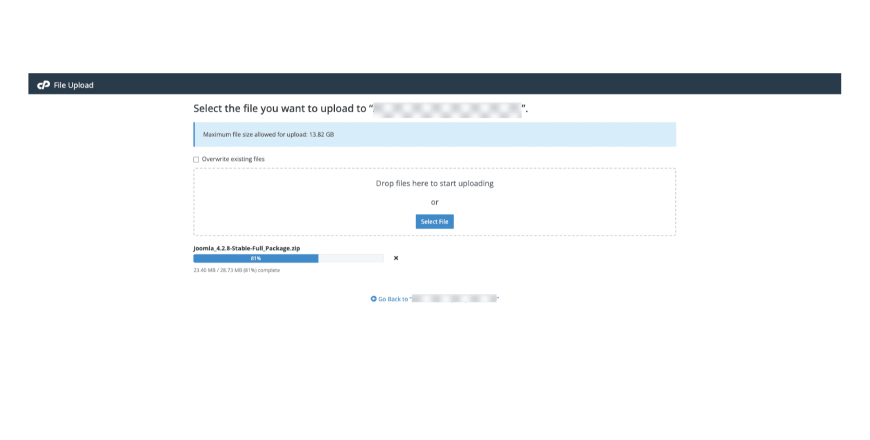
There are two main ways to upload Joomla 4 to your server: via FTP client or through the cPanel file manager. If you’re using an FTP client, you’ll need to download and install an FTP client such as FileZilla and then connect to your server using the FTP details provided by your hosting provider.
If you’re using the cPanel file manager, log in to your cPanel account and navigate to the “File Manager” section.
Create a database

To create a database, you’ll need to log in to your cPanel account and navigate to the “MySQL Databases” section. From there, you can create a new database, a new database user, and assign the user to the database.
Start the installation process
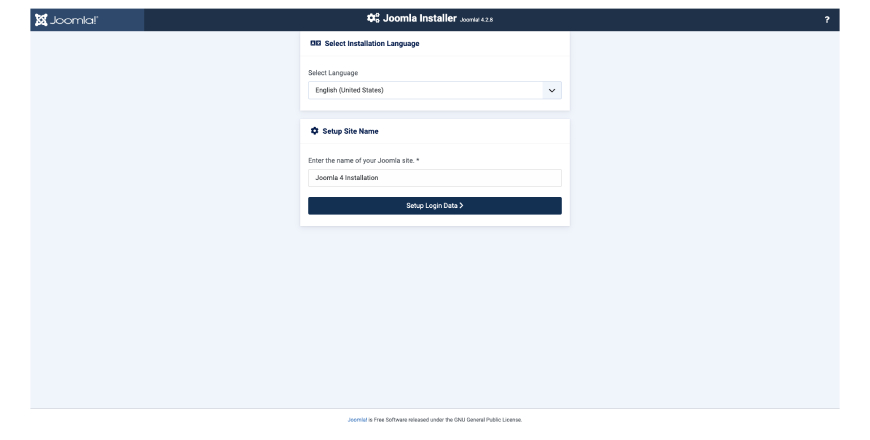
Once you’ve uploaded Joomla 4 to your server and created a database, navigate to the Joomla 4 installation folder using a web browser. You should see the Joomla 4 installation wizard. Follow the instructions provided by the wizard to complete the installation process.
Configure your site
After completing the installation process, you’ll need to configure your site. This includes setting up your site title, admin username, and password, among other things. Follow the instructions provided by the wizard to complete the site configuration process.
Log in to the admin panel
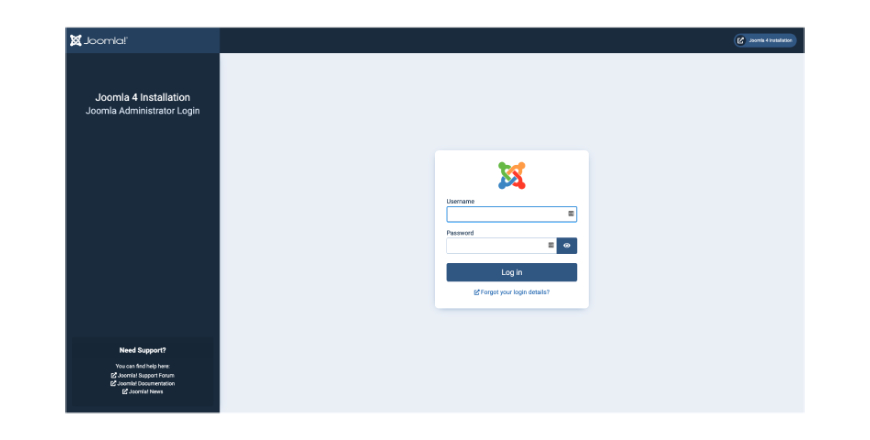
After completing the site configuration process, you’ll be able to log in to the Joomla 4 administrator panel. From there, you can start customizing your site, adding content, and managing your website.
Note: The exact steps may vary based on the specific hosting provider and server environment you’re using. Make sure to consult your hosting provider’s documentation for more information.
Install Joomla! 4 on localhost
Here is a step-by-step guide to installing Joomla 4 on localhost:
Download and install a local server software
To install Joomla 4 on a localhost, you need to set up a local web server environment. You can use popular server environments such as XAMPP, MAMP, WAMP, or any other that you prefer. Start by downloading and installing the software.
Next, place the Joomla 4 installation zip file into the document root folder, which is typically the htdocs folder for XAMPP or MAMP. Unzip the Joomla 4 installation zip file within the htdocs folder. You are now ready to begin the CMS installation process.
Create a database
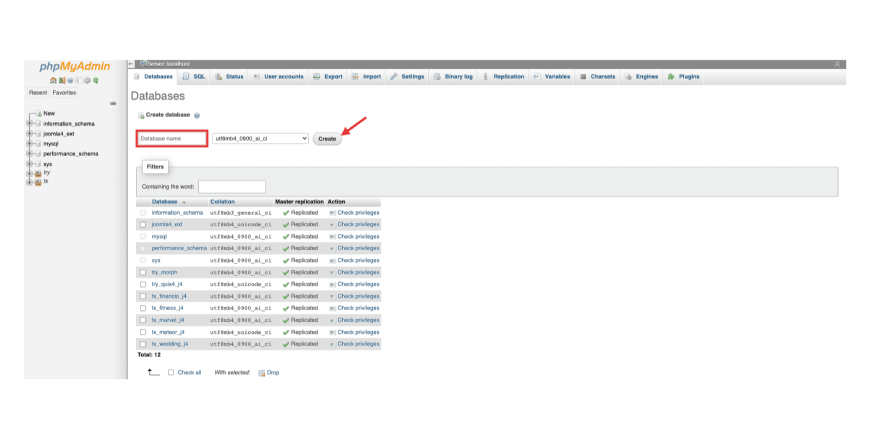
To create a database, you’ll need to use the local server software’s database management tool, such as phpMyAdmin. From there, you can create a new database and set up a new database user.
Start the installation process

Once you’ve extracted the Joomla 4 package and created a database, navigate to the Joomla 4 installation folder using a web browser. You should see the Joomla 4 installation wizard. Follow the instructions provided by the wizard to complete the installation process.
Configure your site
After completing the installation process, you’ll need to configure your site. This includes setting up your site title, admin username, and password, among other things. Follow the instructions provided by the wizard to complete the site configuration process.
Log in to the admin panel

After completing the site configuration process, you’ll be able to log in to the Joomla 4 administrator panel. From there, you can start customizing your site, adding content, and managing your website.
Install Joomla! 4 with App Installer
Here is a step-by-step guide to installing Joomla 4 with App Installer:
Log in to cPanel

Log in to your cPanel account using the login credentials provided by your web hosting provider. Go to the “Softaculous Apps Installer” section and click on it. Scroll down the list of available applications until you find the Joomla 4 option. Click on it to start the installation process.
Select the domain
Choose the domain you want to install Joomla 4 on. If you only have one domain, it should be pre-selected for you.
Configure the Joomla 4 installation
Fill in the required fields, such as the site name, admin username and password, and email address.
Create a database

If you don’t have a database yet, cPanel will prompt you to create one. Fill in the required fields and click on the “Create Database” button.
Start the installation process

Once you’ve configured the Joomla 4 installation and created a database, click on the “Install” button to start the installation process.
Check the installation results
Once the installation process is complete, cPanel will display the results. If the installation was successful, you’ll see a message indicating that Joomla 4 has been installed successfully.
Log in to the admin panel

After the installation process is complete, you can log in to the Joomla 4 administrator panel using the admin username and password you specified during the installation process.
Note: The exact steps may vary based on the specific version of cPanel and the web hosting provider you’re using. Make sure to consult the web hosting provider’s documentation for more information.
Wrap Up
To wrap up, installing Joomla 4 can be a relatively easy and straightforward process, as long as you follow the steps carefully and have the necessary tools and resources at your disposal.
Whether you are installing Joomla 4 on a localhost or a server, the process requires you to set up a web server environment and then run the Joomla 4 installation script. By following the steps outlined in this guide, you will be able to install Joomla 4 successfully and start building and customizing your website.
Joomla 4 is a powerful and versatile content management system, and with its many features and plugins, you can create a professional and dynamic website that meets your specific needs.
Whether you are a beginner or an experienced web developer, Joomla 4 is an excellent choice for anyone looking to build and manage a successful website.
How Joomla Development Can Benefit You?
Joomla! is an open source Content Management System (CMS) used for creating websites, web portals, eCommerce portals, and much more. The benefits of Joomla are compelling enough that more than 85,000 companies worldwide along with 33 of 500 fortune companies including eBay and General Electric, use this CMS.
Additionally, Joomla offers a large community of developers, designers, and users who actively contribute to its development and support. This means that you can easily find solutions, help, and support through various forums, blogs, and communities.
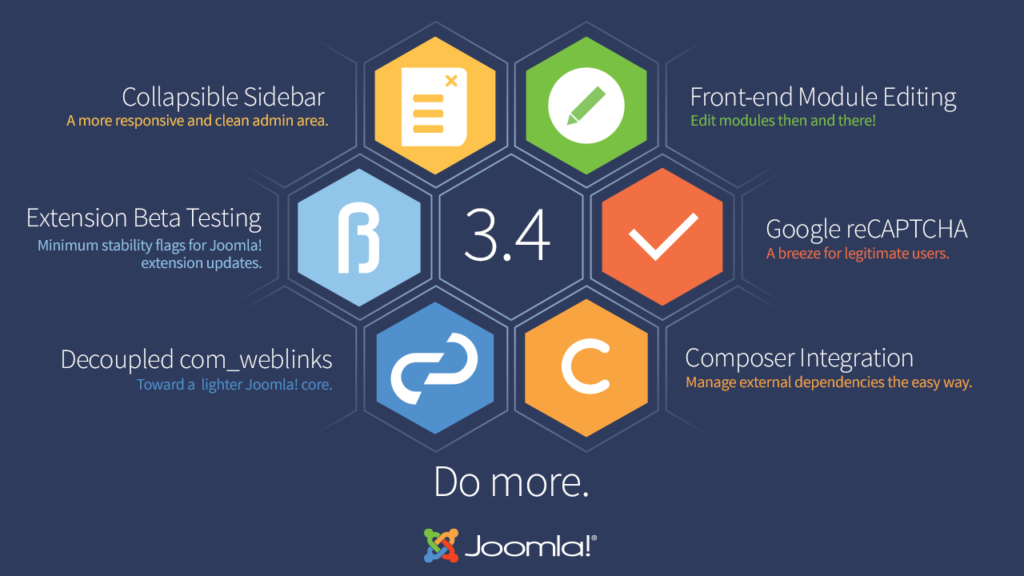

With Joomla, you can also easily manage multiple websites from a single admin panel, which can save you a lot of time and effort. The platform is also highly scalable and can handle large amounts of content and traffic, making it suitable for businesses of all sizes.
Overall, Joomla is a powerful and versatile CMS that can benefit your business in many ways. Whether you need a simple website or a complex web application, Joomla can provide the tools and features you need to achieve your goals.
The websites developed with Joomla can be easily optimized for search engines as it is SEO friendly and has SEO favorable highlights. Moreover, developing websites using Joomla can help your business thrive and prosper in today’s competitive environment. Are you looking for a reliable Joomla consulting partner? JoomlaGurus is a true one-stop solution and your go-to Joomla partner for creating the custom Joomla solution your business needs to operate and grow. Our Joomla development capabilities encompass a whole spectrum of aspects related to Joomla to make you the king of a Joomla venture.
Organizational Management in joomla
Organizational management in Joomla refers to the process of managing and organizing the content, users, and permissions on a Joomla site. As an open-source content management system, Joomla provides a robust set of organizational management tools that can help businesses and organizations manage their online presence and streamline their workflows.

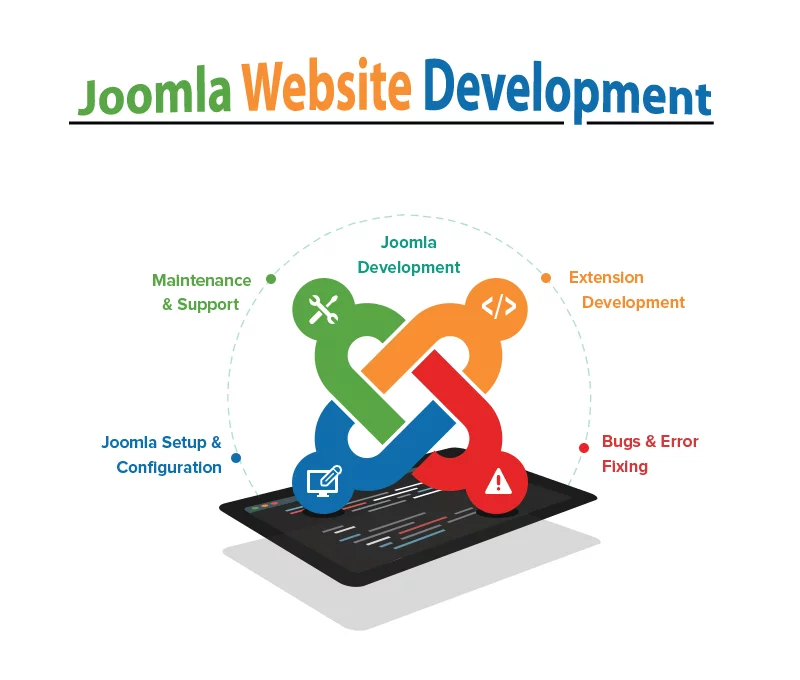
Some key features of Joomla’s organizational management tools include:
- User management: Joomla allows site administrators to create and manage user accounts with different levels of permissions and access. This can help organizations maintain control over who can view and edit content on their site.
- Content organization: Joomla provides a variety of tools for organizing and categorizing content, including tags, categories, and menus. This can help businesses and organizations ensure that their content is structured in a logical and easy-to-navigate way.
- Access control: Joomla’s access control system allows site administrators to define who can access specific content or sections of the site. This can help organizations maintain security and ensure that sensitive information is only accessible to authorized users.
- Workflow management: Joomla provides tools for managing content creation and publishing workflows, allowing organizations to define specific processes and workflows for creating, reviewing, and publishing content.
Overall, Joomla’s organizational management tools can help businesses and organizations maintain control over their online presence and streamline their workflows, making it an ideal platform for managing and organizing content, users, and permissions.
Hire Us as Your Joomla Consultants?
As experienced Joomla consultants, we can help your business or organization to achieve your online objectives by leveraging the full capabilities of Joomla. Our Joomla consulting services include:


- Website assessment and analysis: We will assess and analyze your current Joomla website and identify any areas that need improvement.
- Customized solutions: We will work with you to develop customized Joomla solutions that meet your specific business needs, including custom component development, template customization, and extension development.
- Performance optimization: We will optimize your Joomla website’s performance by improving its speed, security, and user experience.
- Training and support: We offer training and support services to help you and your team better understand Joomla and its capabilities, allowing you to maximize the potential of your website.
- Upgrades and migrations: We will help you upgrade your Joomla website to the latest version, or migrate your website from another platform to Joomla.
- SEO Optimized: Our Joomla experts perfectly build a site to get it on the first page of Search Engines with ease.
- Affordable Pricing: We help you in every possible way with our on-time, on-budget, and on-value Joomla services.
- Ongoing maintenance and support: We offer ongoing maintenance and support services to ensure that your Joomla website is always up-to-date and operating at peak performance.
By hiring us as your Joomla consultants, you can benefit from our expertise and experience in developing Joomla websites and achieving online success. We will work with you to understand your business needs and goals, and develop customized solutions to help you achieve them.
Joomla eCommerce Development
Joomla eCommerce development is a critical aspect of building a successful online store that appeals to the target market and drives sales and revenue. As an experienced team of Joomla developers, we have the expertise to create outstanding eCommerce stores that are optimized for conversions and profitability.

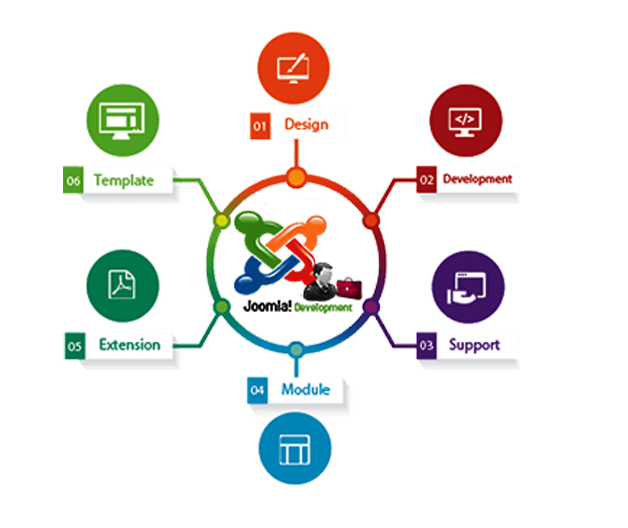
Our team can provide a wide range of Joomla eCommerce development services, including custom eCommerce website design, theme development, extension customization, payment gateway integration, and more. By working closely with clients to understand their business objectives, target audience, and competitive landscape, our team can create eCommerce stores that are tailored to their unique needs and requirements.
Whether clients require a simple eCommerce site with basic functionality or a complex online store with advanced features and integrations, our team can deliver solutions that are optimized for performance and profitability. By leveraging the latest Joomla eCommerce tools and technologies, our team can create stores that are secure, scalable, and user-friendly, ensuring a seamless online shopping experience for customers and driving engagement and conversions.
Overall, Joomla eCommerce development is a critical aspect of building a successful online store, and our team have the expertise and experience to deliver high-quality, results-driven solutions that help clients achieve their business objectives and stand out in the competitive eCommerce landscape.






